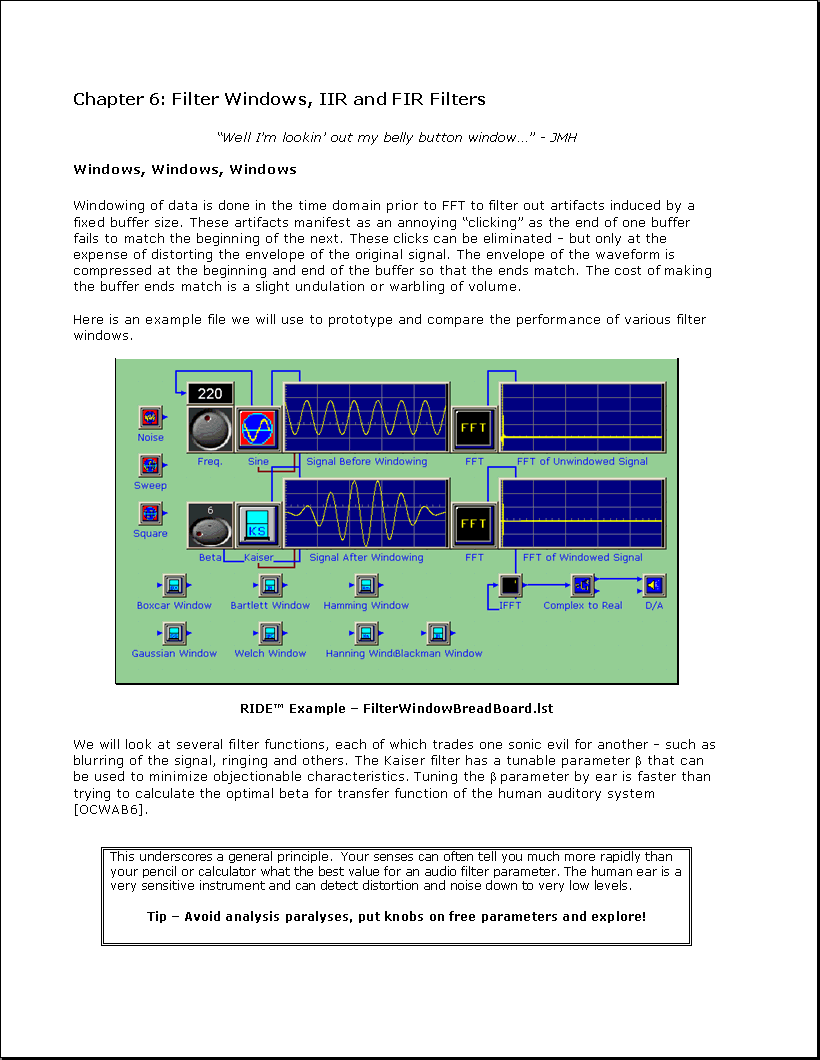
Chapter 6: Filter Windows, IIR and FIR Filters
" Well I'm lookin' out my belly button window..." - JMH
Windows, Windows, Windows
Windowing of data is done in the time domain prior to FFT to filter out artifacts induced by a
fixed buffer size. These artifacts manifest as an annoying "clicking" as the end of one buffer
fails to match the beginning of the next. These clicks can be eliminated - but only at the
expense of distorting the envelope of the original signal. The envelope of the waveform is
compressed at the beginning and end of the buffer so that the ends match. The cost of making
the buffer ends match is a slight undulation or warbling of volume.
Here is an example file we will use to prototype and compare the performance of various filter
windows.
RIDE(tm) Example - FilterWindowBreadBoard.lst
We will look at several filter functions, each of which trades one sonic evil for another - such as
blurring of the signal, ringing and others. The Kaiser filter has a tunable parameter ? that can
be used to minimize objectionable characteristics. Tuning the ??parameter by ear is faster than
trying to calculate the optimal beta for transfer function of the human auditory system
[OCWAB6].
This underscores a general principle. Your senses can often tell you much more rapidly than
your pencil or calculator what the best value for an audio filter parameter. The human ear is a
very sensitive instrument and can detect distortion and noise down to very low levels.
Tip - Avoid analysis paralyses, put knobs on free parameters and explore!